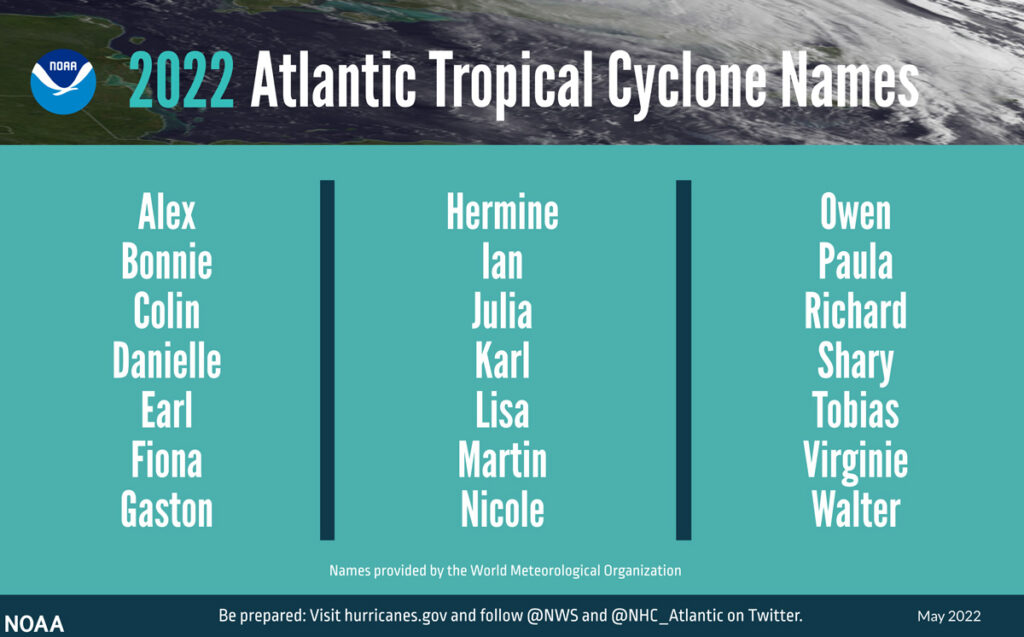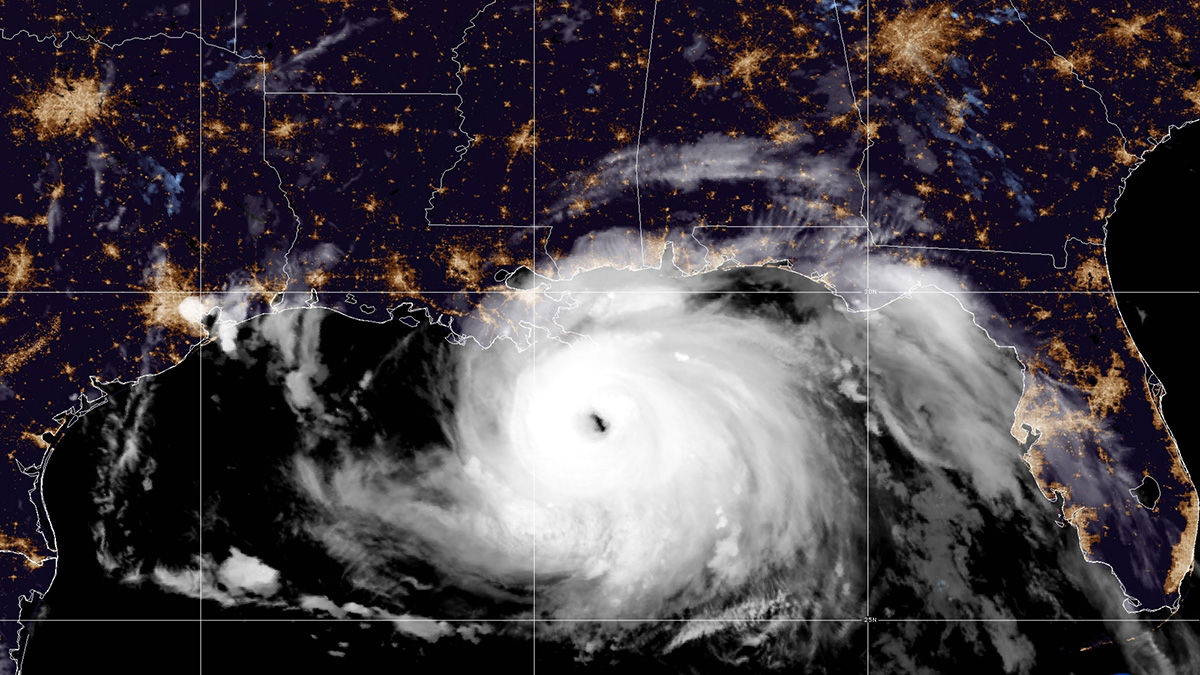If forecasts are correct, this season will mark the seventh consecutive above-normal hurricane season for the Atlantic. NOAA forecasts out today predict a 65% chance of an above-average season, a 25% chance of a normal season, and a 10% chance of a below-normal season. The ranges account for uncertainty in the data and models of NOAA’s Climate Prediction Center.
The year could be twice as active as normal.
The year could be twice as active as normal, said NOAA forecaster Matthew Rosencrans at a news conference today. The accumulated cyclone energy (ACE) index, which represents the season’s intensity and duration of storms, comes to 115 to 200. A near-average season has an ACE index between 66 and 111.
NOAA forecasts 14 to 21 named storms this season, which is higher than the average of 14.4 per season. Hurricane watchers may remember that 2020 and 2021 were the first 2 years that hurricane forecasters ran out of names for hurricanes after using all 21 storm names.
Six to 10 of the named storms could become hurricanes with winds clocking 74 miles per hour (119 kilometers per hour) or higher. Of those, three to six could grow into major hurricanes with winds of 111 miles per hour (179 kilometers per hour) or above. NOAA gives the prediction 70% confidence.
The first storm disturbance of the year traveled over the Florida Panhandle yesterday. Hurricane season officially runs from 1 June to 30 November.

The prediction agrees with independent forecasts issued by universities and agencies. All other forecasts but one predicted an above-average number of storms this year.
Several ingredients make this season more active than others. First, a long-lasting La Niña is holding strong, allowing for air over the Atlantic to more easily convect and grow storms. Second, ocean waters in the Atlantic and the Caribbean Sea are warmer than average, fueling storms. Third, a “particularly active” West African monsoon season is another factor, said Rosencrans.
Hurricane seasons go through periods of activity and quiescence, and we’ve been in an active period since we entered the warm phase of the Atlantic Multidecadal Oscillation around 1995. The oscillation drives more active seasons, as was the case during a warm phase in the 1950s and 1960s.
One unique attribute this season is a Loop Current in the Gulf of Mexico that looks similar to the one in 2005.
One unique attribute this season is a Loop Current in the Gulf of Mexico that looks similar to the one in 2005, when the warm current helped fuel the rapid intensification of hurricanes like Katrina. The current brings warm water from the Caribbean Sea into the Gulf of Mexico before heading into the North Atlantic Ocean. This year, the current is coming farther into the Gulf than usual. The effect of the Loop Current on hurricane season depends on the tracks of storms, which scientists cannot forecast until about a week out, said Rosencrans.
Scientists search for the role of climate change in hurricanes by assessing the factors fueling them, experts say. “As a note of caution, we can’t simply point to a particular storm, whether it’s a strong storm like Ida or any others, and say, ‘There, that is climate change,’” said NOAA Administrator Rick Spinrad. “The attribution is more in the patterns, the tendencies, [and] the mode that we’re in.”
A study from European scientists published this year suggests that the active 2021 Atlantic hurricane season was made twice as likely by warming ocean waters. Simulated sea surface temperatures in the Atlantic rising between 1982 and 2020 in a weather model doubled the chance of an extremely active storm season, according to the research.
A separate look at the 2020 season by American scientists found that climate change intensified extreme rains of tropical storms and hurricanes.
—Jenessa Duncombe (@jrdscience), Staff Writer

